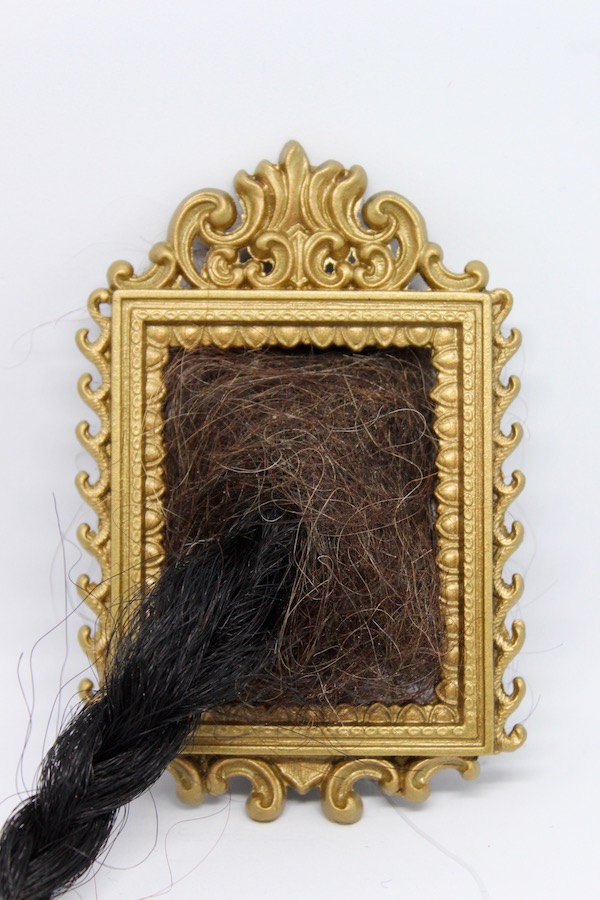Kimberly Morris creates work that is intensely visceral. She makes art about subjects intrinsically rooted in American culture, yet entirely personal. As an interdisciplinary artist, she has worked with a wide range of mediums over the years, including painting, video, photography and sculpture.
In her recent sculptural work, hair is one of the most used materials. “I tend to work with whatever medium best lends itself to my ideas,” Morris says. The woven patterns of her hair works are inspired by or connected to traditional African and African American coiffure, Creole Mardi Gras masks and even commedia dell’arte costuming. Her work “speaks to my own life experiences as a Black woman, and though the experiences that I touch upon may be relatable or universal for some, they may not be relatable for all.” The most essential message she can convey in her work is personal truth: “If we are willing to face ourselves in the mirror, we are willing to grow.”

Kimberly Morris, Burden (detail), 2017; photo by Todd Sharp.
Morris participated in a number of group shows this past year in LA. Seeing Morris’ work, one can feel her intuitive, magical process, which she describes as “shamanistic, like I’m summoning my ancestors.”
In one of her masks Aged (2019), she uses hair dyed gray, calling on the common metaphor for decrepitude or decline, though here it seems instead powerful—the mask of a wise superhero. Other masks formed from hair use vibrant shades of purple, gold, emerald green—Mardi Gras shades. The sculptural works are the shapes she shifts from tropes of cultural identity. Vibrating with color, a large-scale textural fabric sculpture rises in a thick hot-pink band, fading into purple as it approached the ceiling in her Monte Vista Projects work. Like a ray of light, it rises from a swirling vortex of pink, white, brown, darker brown, and black. She casts herself behind masks in her digital photos, enacting the roles they allow her to play, such as a gold-clad “Creole Queen.”

Kimberly Morris, Relics: Past, Present, Future (detail), 2018.
Morris believes that today in the U.S., the largest challenge for women of color as artists is representation. While we would all like to hear a rosy picture of near-future change, Morris, like so many of us, can’t quite envision real alteration in the way our society operates. “Maybe I have become a bit jaded when I think about change, but it’s not something I really hold my breath about. However, I strive to remain hopeful about the concept,” she says.

Kimberly Morris, Passé Blanc, 2019.
Morris’ evocation of identity in her work is richly felt. “I explore my existence in the world, particularly American society, through my identity. Whether we like to admit it or not, the way that we are perceived in the world greatly affects our own self-perception. It is through the exploration of my own identity that I understand the world,” she says.
Her identity—and the exploration of it in her work—allows viewers to explore both Morris’ personal perception, and come to a fuller understanding of their own. And that makes the American art world, at least here in Los Angeles, a little more inclusive, and a lot more profound.

